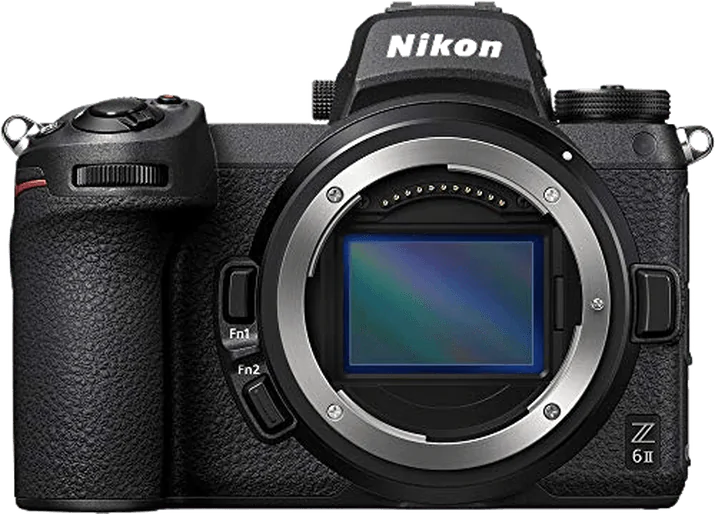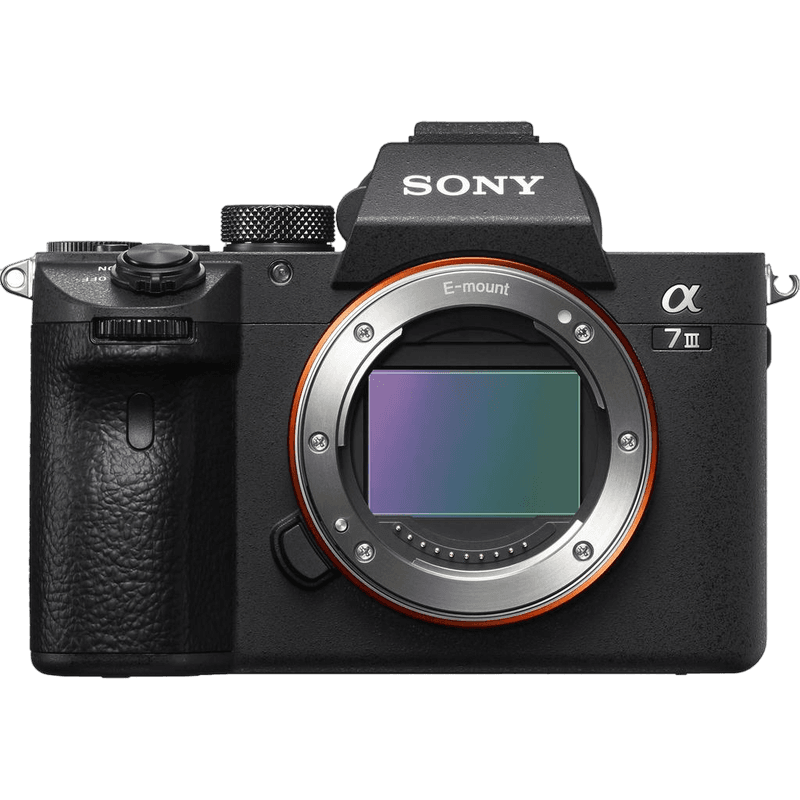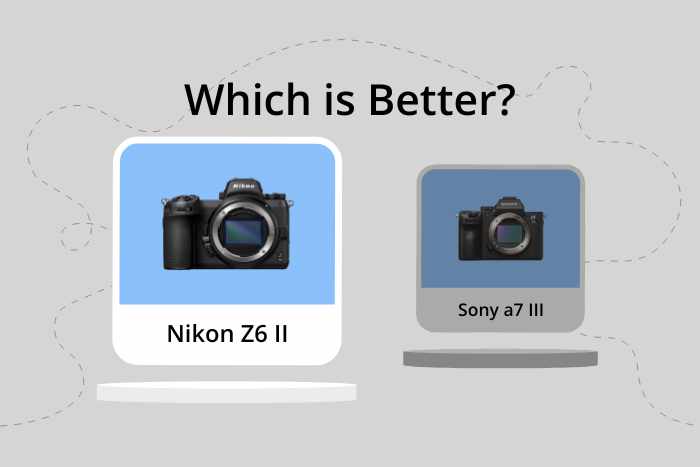Nikon Z6 II vs Sony a7 III Comparison
Nikon Z6 II

Sony a7 III

The Nikon Z6 II edges out the Sony a7 III with a score of 83/100 compared to 81. Both cameras are mirrorless and were released in 2020 and 2018, respectively. They share similar launch prices, with the Nikon Z6 II at $1,995 and the Sony a7 III at $2,000.
The Nikon Z6 II has a larger body, measuring 134 x 101 x 70mm, and is slightly heavier at 705g. This extra size and weight may provide a better grip and stability for certain users. On the other hand, the Sony a7 III is more compact, measuring 127 x 96 x 74mm, and lighter at 650g, making it easier to carry and handle for those who prefer a smaller camera.
Considering these factors, the Nikon Z6 II is the winner due to its higher score and larger size, while the Sony a7 III is a strong contender for those who value a smaller and lighter camera.
Nikon Z6 II vs Sony a7 III Overview and Optics
The Nikon Z6 II edges out the Sony a7 III in optics, scoring 83/100 compared to the Sony’s 81/100. Both cameras share several specifications, such as a CMOS sensor, full-frame sensor size, and image stabilization. They also have similar megapixel counts, with the Nikon Z6 II at 24.5 and the Sony a7 III at 24.2.
The Nikon Z6 II’s higher score is due to its faster shooting speed of 14 frames per second, compared to the Sony a7 III’s 10 frames per second. This makes the Nikon Z6 II more suitable for capturing fast-moving subjects. Additionally, the Nikon Z6 II features a dual Expeed 6 processor, which gives it an advantage in terms of processing speed and overall performance.
On the other hand, the Sony a7 III has a higher DXOMARK score for its sensor, at 96 compared to the Nikon Z6 II’s 94. This indicates that the Sony a7 III’s sensor performs slightly better in terms of image quality. The Sony a7 III also uses the Sony FE lens mount, which gives users access to a wide variety of lenses and accessories.
In comparing the optics of these two cameras, the Nikon Z6 II stands out for its faster shooting speed and processing power, making it a better choice for action photography. The Sony a7 III, however, has a slight advantage in sensor performance and lens compatibility. Ultimately, the choice between these two cameras will depend on the specific needs and preferences of the photographer.
Nikon Z6 II vs Sony a7 III Video Performance
The Nikon Z6 II outperforms the Sony a7 III in video capabilities, with a video score of 91/100 compared to the Sony a7 III’s score of 70. Both cameras share some common specifications, such as a maximum video resolution of 4K and video dimensions of 3840 x 2160.
The Nikon Z6 II surpasses the Sony a7 III in several aspects. First, it offers a higher maximum video frame rate of 120fps, which results in smoother slow-motion footage compared to the Sony a7 III’s 30fps. Both models have a built-in time-lapse functionality, which allows for easy creation of time-lapse videos without the need for additional equipment or software.
The Nikon Z6 II earns its higher video score due to its superior video capabilities, such as a higher maximum video frame rate. The Sony a7 III, on the other hand, does not offer any notable advantages in this area. For those prioritizing video performance, the Nikon Z6 II is the clear choice between the two cameras.
Nikon Z6 II vs Sony a7 III Features and Benefits
The Nikon Z6 II wins the features comparison with a score of 87/100, while the Sony a7 III scores 81/100. Both cameras share some common specs, such as touchscreen capabilities, WIFI, Bluetooth, and the absence of GPS.
The Nikon Z6 II excels with a larger screen size of 3.2 inches and a higher screen resolution of 2,100,000 dots. These features provide better image clarity and an improved user experience when reviewing photos or navigating menus.
On the other hand, the Sony a7 III has a flip screen, which the Nikon Z6 II lacks. This feature can be advantageous for photographers who need to shoot from challenging angles or take self-portraits. Despite this advantage, the a7 III has a smaller screen size of 3 inches and lower screen resolution of 921,600 dots, which may not offer the same level of image clarity and user experience as the Nikon Z6 II.
Considering the differences in features, the Nikon Z6 II stands as the better choice due to its larger screen size and higher screen resolution, which contribute to an enhanced user experience. The Sony a7 III’s flip screen is a valuable feature, but it may not be enough to outweigh the advantages offered by the Nikon Z6 II. Ultimately, photographers should weigh the importance of these features based on their individual needs and preferences when choosing between these two cameras.
Nikon Z6 II vs Sony a7 III Storage and Battery
The Sony a7 III edges out the Nikon Z6 II in storage and battery with a score of 81, compared to the Nikon’s 71. Both cameras share certain specifications, such as having two memory card slots. The Nikon Z6 II accepts SD, CFexpress Type B/XQD (UHS-II compatible) cards, while the Sony a7 III takes SD/SDHC/SDXC and Memory Stick Duo/Pro Duo/Pro-HG Duo cards.
However, the Sony a7 III outperforms the Nikon Z6 II in battery life, offering 750 shots per charge compared to the Nikon’s 410 shots. The Nikon Z6 II uses an EN-EL15c battery, while the Sony a7 III uses an NP-FZ100 battery. Despite these differences, both cameras provide reliable storage and battery performance, catering to various user preferences and needs.
Nikon Z6 II vs Sony a7 III Alternatives
Still not sure which camera is right for you? These trending camera comparisons may inspire you:

